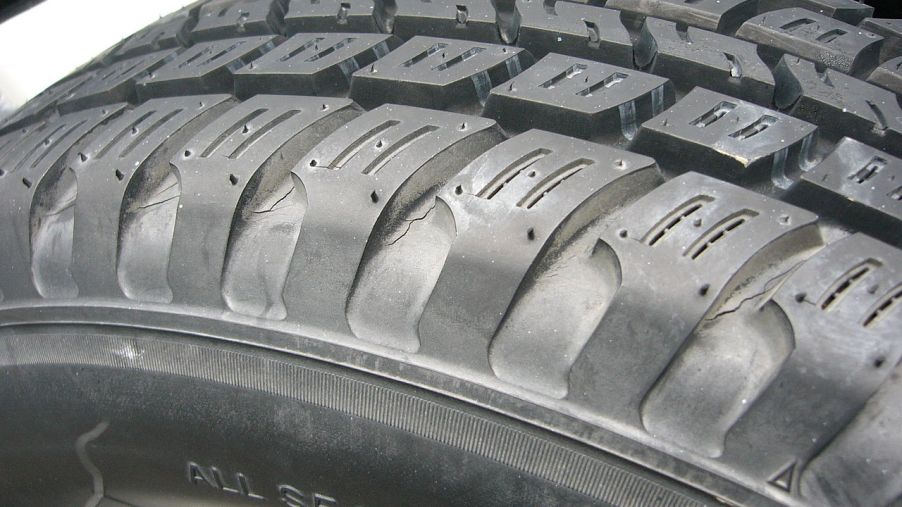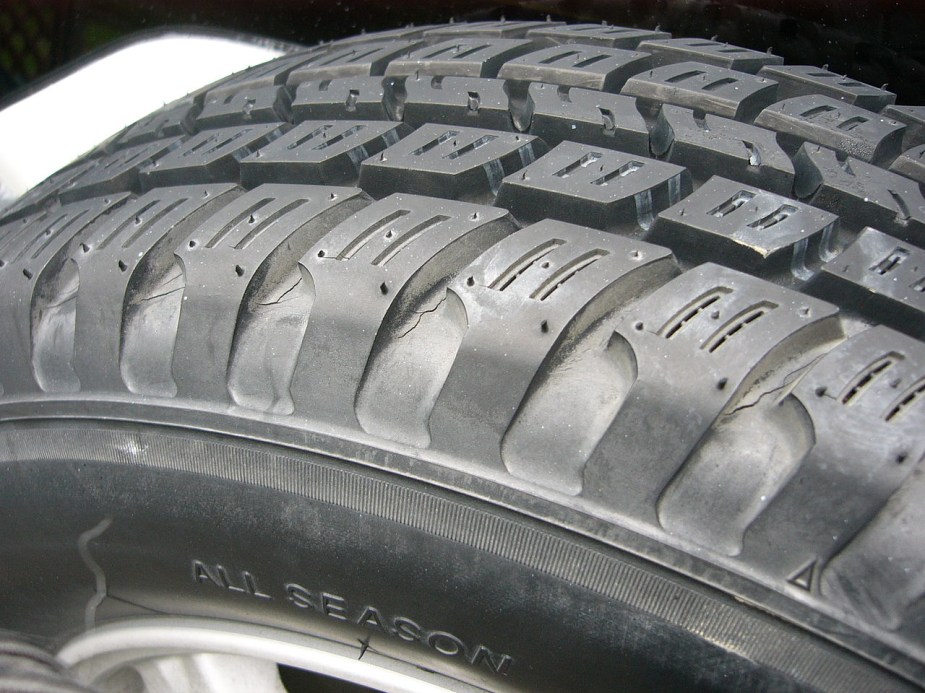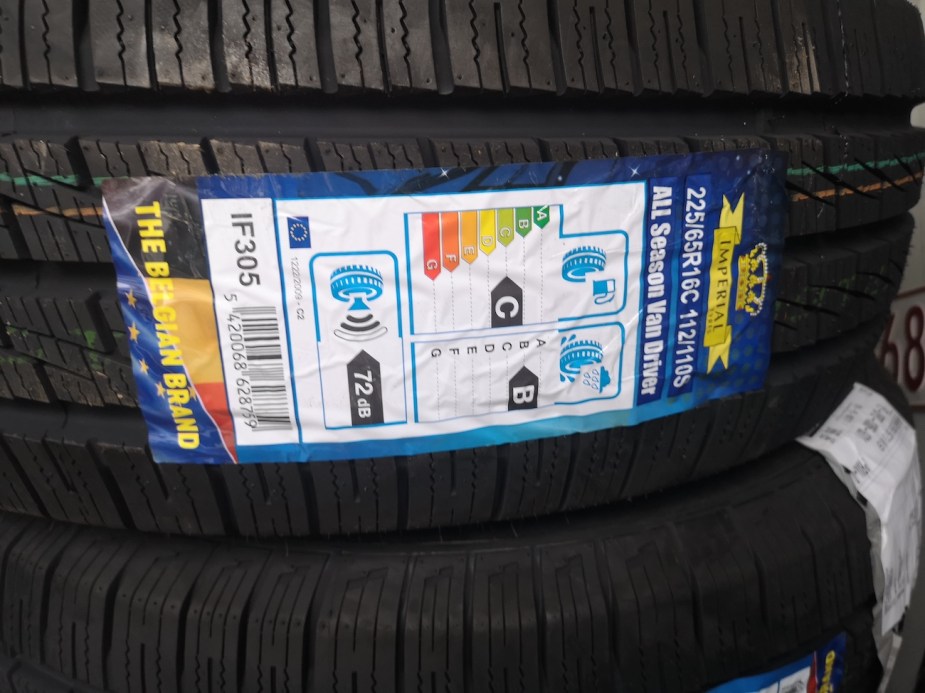
What’s the Difference Between All-Season and All-Weather Tires?
Winter is around the corner and as the mercury drops, so does the snow (in some states). Fortunately, if your car has a set of all-season or all-weather tires on it, it should be OK. But what is the difference between these two types of tires?
Are all-weather tires better than all-season tires?

Technically, yes. But it depends on where you live and what type of climates your car is subjected to. For example, your car will be just fine with all-season tires if you live in a state where you don’t have to deal with too much snow or really cold winters. The reason is that all-season tires have tread patterns that will work in snowy conditions, but the rubber is less pliable under 45 degrees Fahrenheit.
Keep in mind that “snow conditions” means light snow, as all-season tires have lighter grooves in their tread pattern than all-weather tires. This is why many manufacturers will say that an all-season tire is acceptable for light winter conditions or something close to that.
An all-weather tire, on the other hand, has deeper grooves and a siping – lateral grooves – to “claw” at the snow when driving during the winter. But the tread pattern isn’t the main differential between an all-weather and all-season tire. The tire compound on an all-weather tire is a little softer than an all-season as well, which allows it to be more pliable at colder temperatures.
How do you know if a tire is an all-weather tire?
The easiest way to spot an all-weather tire from the rest is to look at the tire sidewall. Every all-weather tire will have a three-peak symbol on the sidewall and say “M+S,” which stands for mud and snow.
The importance of this symbol goes beyond the more intricate tread pattern. According to Tire Review, “Certified with the three-peak mountain snowflake but designed for year-round use, all-weather tires provide better snow grip and handling than a tire without that certification, while maintaining similar spring and summer performance levels of all-season tires, such as good wet grip and wear properties.”
Essentially, an all-weather tire gives you the best of all worlds during every season, considering its compound is close to an all-season tire, but it has a pattern closer to a winter tire. That being said, if you live in an area where the winters are harsh and the temperatures are constantly below freezing, a winter tire is still recommended.
Can you use all-weather tires in the summer?

Yes, although they may not grip as well as genuine summer tires. One of the reasons all-weather tires work well during every season is the compound. Summer tires have a harder compound that gets soft when they heat up. With some heat in them, summer tires stick to the ground more, and the lack of grooves and siping allows for more warm-weather traction.
The compound on all-weather tires is soft enough for colder temperatures but hard enough for hotter temperatures, allowing them to work when the pavement heats up. Case in point, if you live in an area that sees all four seasons, which includes a good amount of snow, then a set of all-weather tires is recommended.



